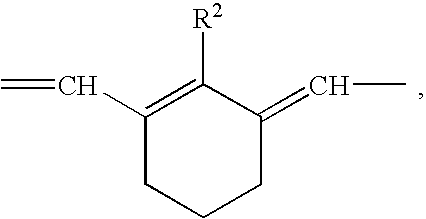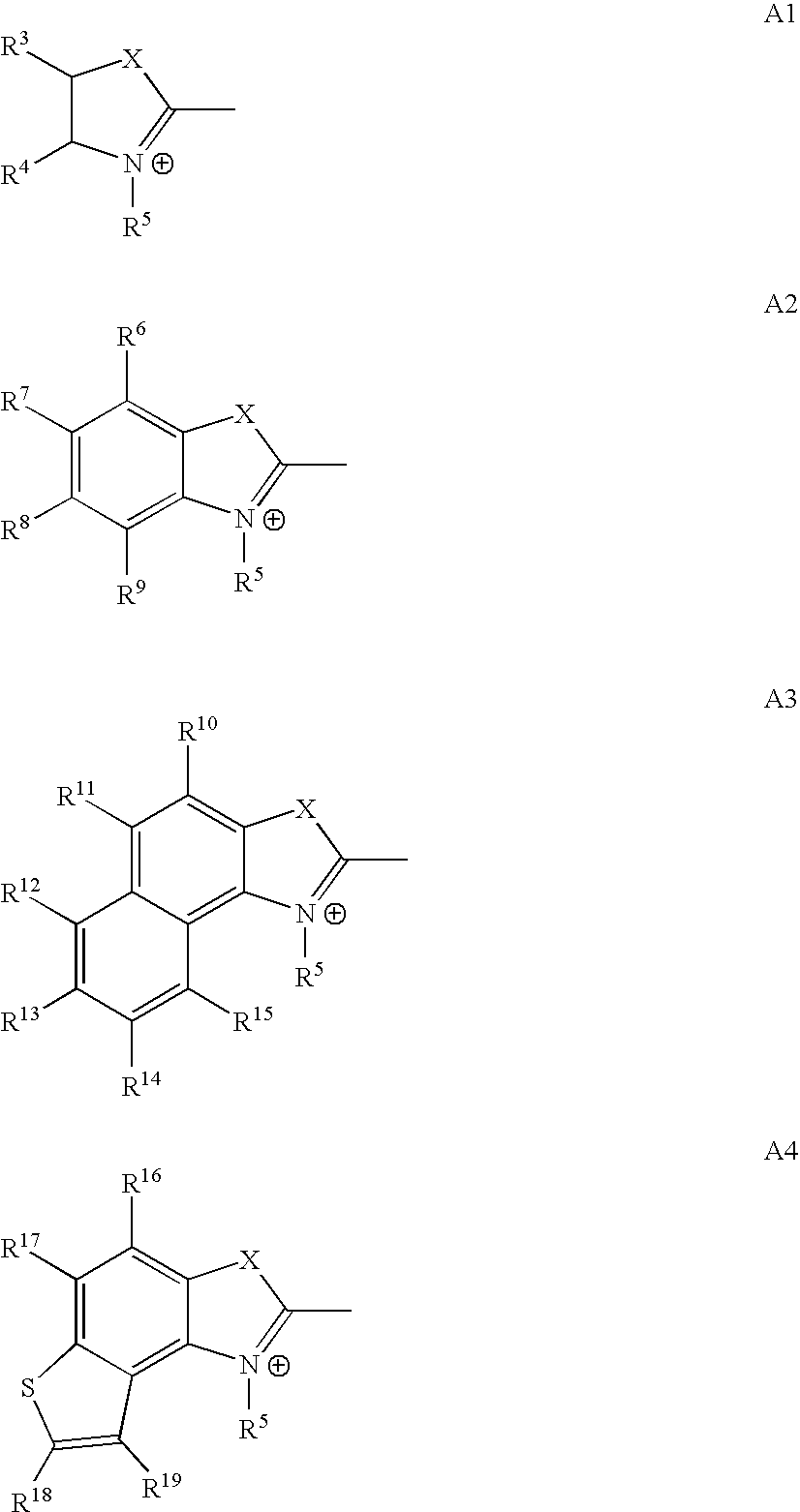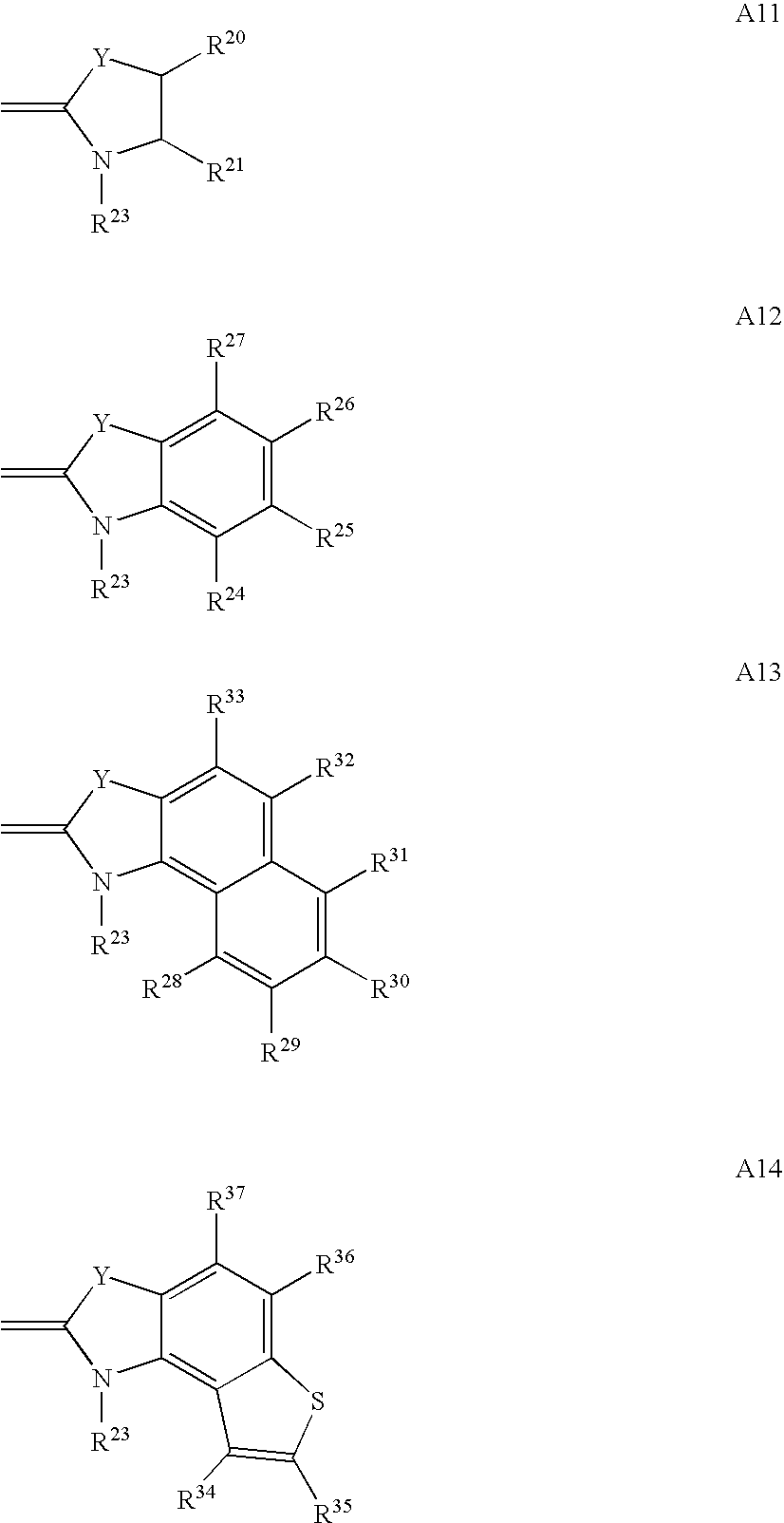Agent for dyeing keratin containing fibers
a technology of dyeing agent and fiber, which is applied in the field of dyeing agent for fiber, can solve the problems of fiber damage, color obtained often has inadequate fastness properties, etc., and achieves the effects of excellent brilliance, little sensitization potential, and no toxic side effects
- Summary
- Abstract
- Description
- Claims
- Application Information
AI Technical Summary
Benefits of technology
Problems solved by technology
Method used
Image
Examples
second embodiment
In a second embodiment, the present invention relates to the use of the compounds of formula I for coloring keratinous fibers.
third embodiment
In a third embodiment, the present invention relates to a process for coloring keratin-containing fibers, more particularly human hair, in which a colorant containing at least one compound corresponding to formula I and typical cosmetic ingredients is applied to the keratin-containing fibers, left thereon for a while, typically ca. 30 minutes, and then rinsed out again or washed out with a shampoo.
The compounds for formula I and the oxidation dye precursors, color intensifiers and substantive dyes optionally present may either be applied to the hair simultaneously or successively, in which case it does not matter which of the two components is applied first. The ammonium or metal salts optionally present may be added to the first or second component. A time of up to 30 minutes can elapse between application of the first and second components. The fibers may even be pretreated with the salt solution.
The compounds of formula I and the oxidation dye precursors, color 110 intensifiers a...
examples
Coloring
A cream base with the following composition [all quantities in g unless otherwise indicated] was first prepared:
tallow fatty alcohol17.0Lorol ® techn.14.0Texapon ® N 28240.0Dehyton ® K325.0Eumulgin ® B 241.5Distilled water12.51C12-18 fatty alcohol (Cognis) 2sodium lauryl ether sulfate (ca. 28% active substance; CTFA name: Sodium Laureth Sulfate) (Cognis) 3fatty acid amide derivative of betaine structure with the formula: R—CONH(CH2)3N+(CH3)2CH2COO (ca. 30% active substance; CTFA name: Cocoamidopropyl Betaine (Cognis) 4cetyl stearyl alcohol containing ca. 20 mol EO (CTFA name: Ceteareth-20) (Cognis)
The following hair coloring cream emulsion was then prepared on the basis of this cream:
cream base:50.0coloring component7.5mmolNa2SO3 (inhibitor)1.0(NH4)2SO41.0conc. ammonia solutionto pH 10waterto 100
The constituents were mixed in the above order. After addition of the oxidation dye precursors and the inhibitor, the emulsion was first adjusted to pH 10 with concentrated ammonia ...
PUM
| Property | Measurement | Unit |
|---|---|---|
| acid | aaaaa | aaaaa |
| weight | aaaaa | aaaaa |
| colors | aaaaa | aaaaa |
Abstract
Description
Claims
Application Information
 Login to View More
Login to View More - R&D
- Intellectual Property
- Life Sciences
- Materials
- Tech Scout
- Unparalleled Data Quality
- Higher Quality Content
- 60% Fewer Hallucinations
Browse by: Latest US Patents, China's latest patents, Technical Efficacy Thesaurus, Application Domain, Technology Topic, Popular Technical Reports.
© 2025 PatSnap. All rights reserved.Legal|Privacy policy|Modern Slavery Act Transparency Statement|Sitemap|About US| Contact US: help@patsnap.com



